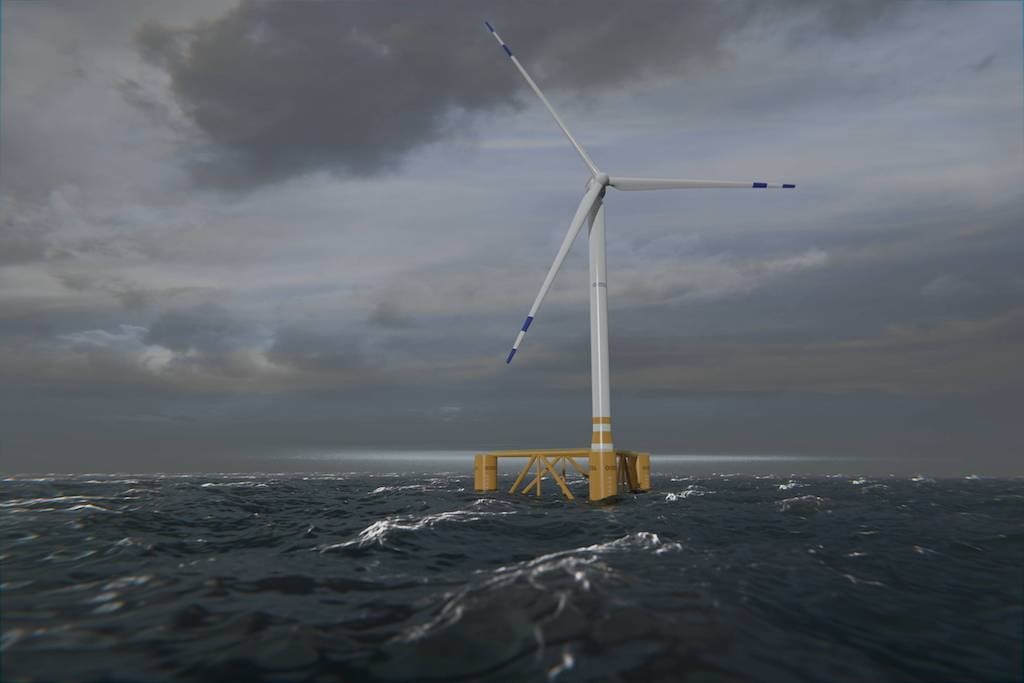With advancements in technology and engineering, and not least political interest, there are now a variety of different floating wind technologies being promoted, each with its own unique design and approach to capturing wind energy. These range from simple floating platforms attached to the seabed, to innovative designs such as semi-submersible and spar-buoy concepts. However, few if any of these designs have so far been proven in full scale for large wind turbine generators. Many of them only exist as computer rendered images at an early stage of development. The designs that have come furthest have begun to involve the classification societies.

The role of a classification society
Traditionally, classification societies have been the auditors of marine engineering. They ensured design, construction, and operations were conducted according to well defined and documented regulations. These days, a modern classification society has expanded its role to include a range of project management, risk, and advisory services.
Today, these societies (such as DNV, BV, ABS, LR, NK and others) play a crucial role in the development and implementation of floating offshore wind projects.
- Technical Assessment: technical assessments of floating wind turbine designs, including structural integrity, fatigue, and load analysis. These assessments help to ensure the safety, reliability, and performance of the floating wind turbines.
- Certification: certification services for floating wind structures and their components. This includes certification of the design, production, and installation of the units, as well as certification of the operations and maintenance processes.
- Risk Management: risk management services for Floating Offshore Wind (FOW) projects, helping developers, investors, and operators to assess and manage risk. Including assessments of the design, construction, installation, and operation of the units, as well as environmental evaluations.
- Standards Development: development of industry standards for floating offshore wind. The development of standards for the design, construction, and operation of floating wind turbines, as well as standards for the offshore grid infrastructure.
- Advisory Services: advisory services to help clients navigate the complexities of FOW projects, including project management, environmental impact assessments, and regulatory compliance.
Approval in Principle (AiP) versus Basic Design Approval (BDA)
A few of the most mature designs have achieved principal approval (such as Approval in Principle from DNV), whilst very few have achieved a design approval (such as Basic Design Approval from DNV), from a classification society.
Approval in Principle (AiP) is a preliminary assessment of a design, indicating that it meets the relevant rules and regulations set by the classification society. An AiP is a non-binding evaluation and is not a guarantee of future approval for construction. AiP is a useful tool for ship and offshore operators, designers, and builders, as it provides an early assessment of the feasibility and compliance of their design with the relevant standards.
Basic Design Approval (BDA), on the other hand, is the final approval of a design and the authorization to proceed with the construction of the asset. A BDA is only granted after a comprehensive review of the design, including detailed calculations, drawings, and specifications. The BDA is a binding evaluation and certifies that the design meets all the relevant safety, environmental, and performance requirements set by the classification society.
In short, a principal approval provides an early evaluation of the design's feasibility and compliance with the relevant standards and can be obtained based on limited design calculations and drawings. A design approval is the final approval of the design and the authorization to proceed with construction. It takes thousands of engineering hours, comprehensive and sophisticated simulations, model tank testing and strong involvement by the Wind Turbine Generator (WTG) supplier. OOW will in coming Knowledge articles write about the challenges and pitfalls of designing floating wind structures for large WTGs.
It is a high-risk strategy to make a concept select decision on a floater design without having a BDA or equivalent in place for a specific WTG.

Illustration: Selection of news related to Approval in Principle of floating wind designs (misc. media sources)
Technology Readiness Level (TRL) assessments
When developing new technologies, it is considered good practice to use a system known as the Technology Readiness Level (TRL). This is a scaling maturity system ranging from 1 to 9, with 1 being the lowest level of maturity and 9 being the highest. Each level is associated with specific criteria, such as the existence of basic principles, laboratory testing, prototype development, and successful field testing. So how is the TRL scale related to the maturity level of a floating wind design? And how does it compare with the AiP and BDA terms?
When considering the design maturity in the TRL system, the type of design principles being applied and to which degree these vary from proven technologies should be considered. A new design would still have a high TRL if the design was like something that has been built before.
Our sibling, Odfjell Drilling is a harsh environment drilling company that has implemented new semi-submersible drilling rig designs repeatedly for more than five decades, always being successful in bringing their newbuilds straight onto commercial contracts. A full-scale prototype has never been desirable or relevant. Why? Because the designs, even if they always have introduced new innovations, have always been based on the well proven main principles.

Illustration: the evolution of semisubmersible rig designs (Odfjell Drilling)
One benefit of being on known ground, apart from reaping the benefits of decades of design and operational excellence, is the availability of advanced software simulation tools, which, with very high confidence levels can predict how a structure will behave in any kind of weather. Experience of tank testing, and the optimisation of scale models allows us to calibrate and verify floater motions and loads for further confidence. Additionally, if the concept is based on a well-proven offshore wind turbine generator (WTG) and a well-known mooring design, the risk of surprises is further minimized.
This is why a classification society would consider a floating wind design based on well-known design principles and having reached a detail and maturity level sufficient for achieving a Basic Design Approval, as having a high TRL. Even if that specific unit has not been built before.
It is still early days for the floating wind era, and the one size fits all floating wind design unit has probably not been developed yet. Just like the previous 50 years’ experience of floating offshore drilling, an evolution in floating offshore wind is also to be expected.
Some of the designs for smaller WTG sizes (below 12 MW) will not be equally relevant for 15 MW and larger WTGs with significantly more challenging weight and load profiles to cope with. It is likely that the future different design principles will prove to have their merits in different market and operational segments for floating wind. An equivalent can be seen in the offshore drilling market where deep water, benign locations are now mainly served by drill ships, and harsh environment locations are served by semi-submersible drilling rigs more capable of handling rough weather.
We should not forget that naval architecture has been around for thousands of years and new designs, while they may contain radical innovations, rarely start from scratch. Modern simulation tools, model tank testing and experience from thousands of different offshore structures have enabled accurate predictions of their behaviour.



